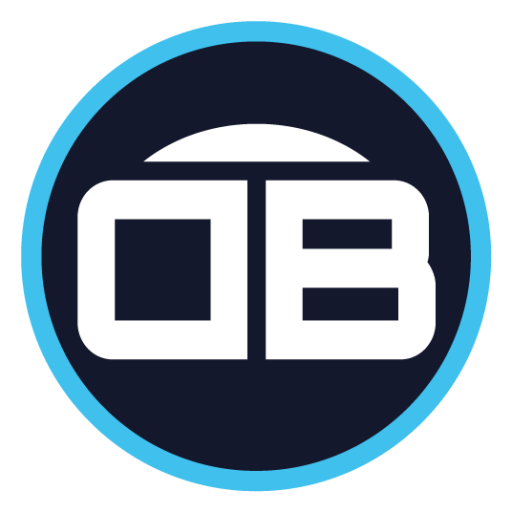 John Coughlan
| 03 January 2023 |
John Coughlan
| 03 January 2023 |
B2B eCommerce: It’s time to get ahead of the curve

B2B Business Models & Sales Channels
B2B buying and selling is already undergoing a monumental shift and is set to evolve even more in the next five years. Already B2B buyers spend only 17% of their time with sales reps – the once-traditional sales channel for business-to-business deals. In fact, 44% of millennials in a B2B setting want no interaction with a sales rep at all. So, what’s the solution?
With changing attitudes to buying in the B2B world, come changes in how you engage with your customers and get sales over the line. Whilst we’ve seen a huge shift to eCommerce for B2C following the pandemic, B2B eCommerce is set to be pivotal in the coming years. This is what you need to know to keep ahead of the curve.
B2B customers are more complex than B2C
A B2C customer is a single person. Yes, there may be many demographics buying from a B2C website, but the transaction is simply a shopper buying from a merchant. With B2B, a purchase can involve a subject matter expert researching products to fit their need, a procurement employee purchasing a product, or a job site supervisor influencing when shipments need to arrive to keep things moving.
These roles all have a distinct need that a B2B eCommerce site should be able to address. This means that the user experience has to be wider-ranging than for a B2C site – it should be easy to search, simple to purchase and straightforward to manage the account on the same site.
But more than that, 70% of B2B customers expect an ‘Amazon-like’ experience for B2B eCommerce. This relies on a user experience that’s highly tailored and personalised, as well as an omnichannel offering that offers multiple points of engagement. The latter also ensures you can gather as much data as possible on your users too.
B2B Payment Options
Payments for B2C eCommerce sites are simple. It could be a credit or debit card, PayPal or Klarna for example. For B2B, it’s anything but simple – there needs to be the ability to create purchase orders, budget workflows, pay on credit, check available credit as well as pay with a corporate charge card.
Also, it’s key to integrate with various payment management solutions and providers to serve customers with credit limits and payment options.
Pricing is never simple for B2B
Pricing may also change in line with the customer relationship – this could be across the board or in relation to the volume of products for example. An appropriate B2B platform should be built to handle these varying pricing scenarios – no matter how complex or how many unique pricing constructs exist
B2B products are intricate and variable
When it comes to products, B2B products tend to be far more intricate than B2C – often there are far more product variants and customisations. Products can range anywhere from simple consumable products to highly technical and configurable products.
In some cases the product being sold is one that is needed to make another product or system, meaning there will be multiple sizes and dimensions to choose from. It’s integral for the customer to be able to access information about dimensions, bundles, specification details, warranty information and much more to ensure they’re making a fully informed purchase. This also means that supporting documentation should be readily available – most often in the form of PDF documents that can be quickly accessed and downloaded without making the onsite experience cumbersome. It’s a delicate balancing act.
Site Speed and Performance are crucial
We’ve already touched on the vast numbers and variations of products that have to be available to your customers, often at different price points depending on the user.
For your site to perform as it should and provide the user experience that’s essential for B2B customers, there will be huge volumes of data flowing back and forth between your front and back end. For example, some users may not need to have access to all your products (or may not be allowed to view the entire catalogue). This means B2B eCommerce sites need to be able to render the precise product catalogue for each and every customer, every time they visit the site.
Your product inventory is also likely to be linked to multiple warehouses, with variables that change all the time – ensuring accurate inventories are shown to each of your customers relies on a huge volume of data being accessed in real-time through a precise and high-performing API integration architecture.
A powerful on site search functionality is essential
So, you have multiple customers with varying needs and a huge product inventory – but you also need to enable the right product to be found by the right customer at the right time. Your search functionality is therefore key.
It’s essential to be able to index many attributes beyond name and identifier to include size attributes, materials and more. Auto-complete and suggested spelling corrections are also essential, as is the ability to enable the user to filter their search results for items they’ve bought before – many returning B2B customers will be buying the same products time and time again. Sometimes these are recurring purchases so requisition lists aid the efficiency and in other examples being able to schedule a regular order will help make the task in had easier for the buyer.
An intuitive checkout could get you ahead of your competitors
The checkout experience is crucial to ensure a seamless experience for your users. Not only should you ensure all your customer-specific tailored pricing is available at the checkout, but your B2B website must also allow for multiple shipping, location and payment options. And with just 15% of B2B customers interested in speaking to a sales rep when reordering products, it helps to offer one-click reordering for simple checkouts.
Choosing the right platform to power your B2B business
Whether you already sell B2C and want to grow your business with a B2B offering or you’re simply a B2B seller looking to cater for the growing demand for B2B eCommerce, choosing the right B2B platform to power your business online is essential. And you have plenty of options to choose from. For example, Big Commerce offers a B2B edition whilst the open nature of the platform also means that you can create additional functionality around its core offerings. The customisable nature of HCL Commerce on the other hand makes it an ideal fit for a bespoke B2B solution. And these are just two of the many possibilities.
Ready to find out more about B2b eCommerce…
At DeeperThanBlue, we specialise in B2B eCommerce, helping our clients to better serve their customers and stay ahead of the competition. Get in touch with one of our specialists today to discuss the future of your business.
Related Content
Time to welcome the MACH Alliance?
Are you ready for total experience…? It’s time to welcome the MACH Alliance We never get tired of talking toFind out more
Journey to faster promotional agility with headless commerce
Adopting a headless approach to your eCommerce platform will offer plenty of opportunities. The term ‘headless’ means different things toFind out more
These might interest you
Time to welcome the MACH Alliance?
Are you ready for total experience…? It’s time to welcome the MACH Alliance We never get tired of talking to Read MoreJourney to faster promotional agility with headless commerce
Adopting a headless approach to your eCommerce platform will offer plenty of opportunities. The term ‘headless’ means different things to Read More

